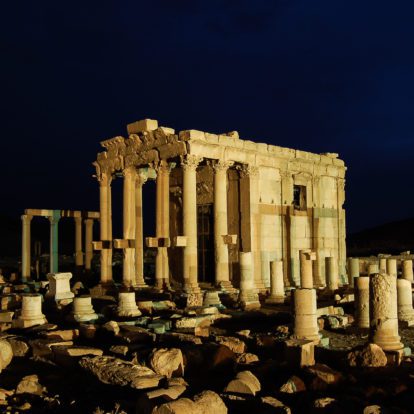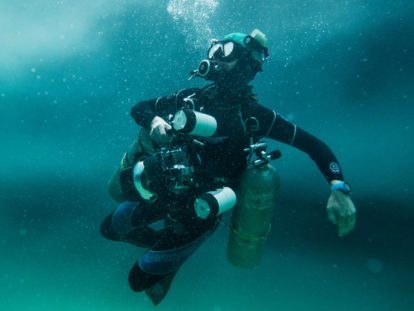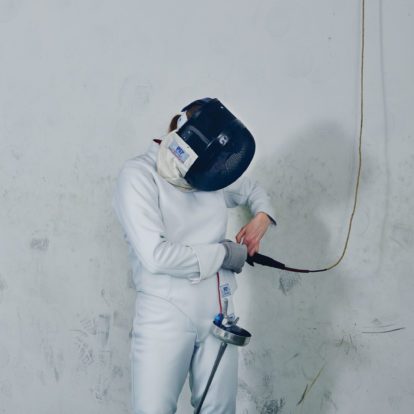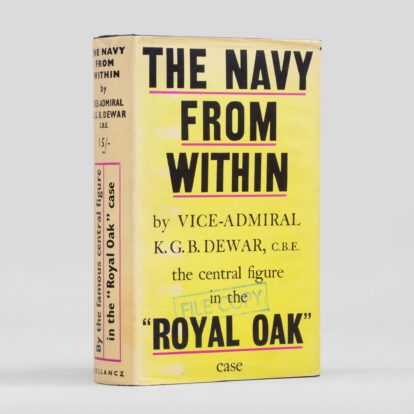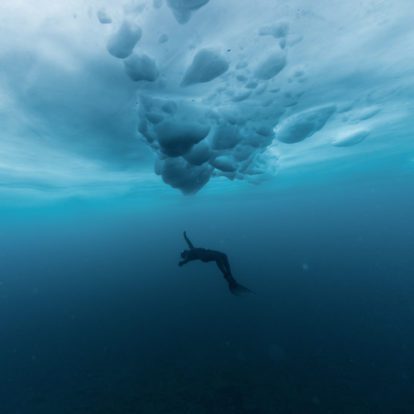The arapaima looks as if it has emerged straight from the primordial soup. The world’s largest freshwater fish (it can reach up to 10 feet in length) has a broad flat head that’s copperish green in colour, a hefty black body, and a massive red-tinged tail. Its ability to breathe air means it can survive up to twenty-four hours outside water, and as well as feeding on fish it can eat insects, birds and even small mammals that are unwise enough to venture close.
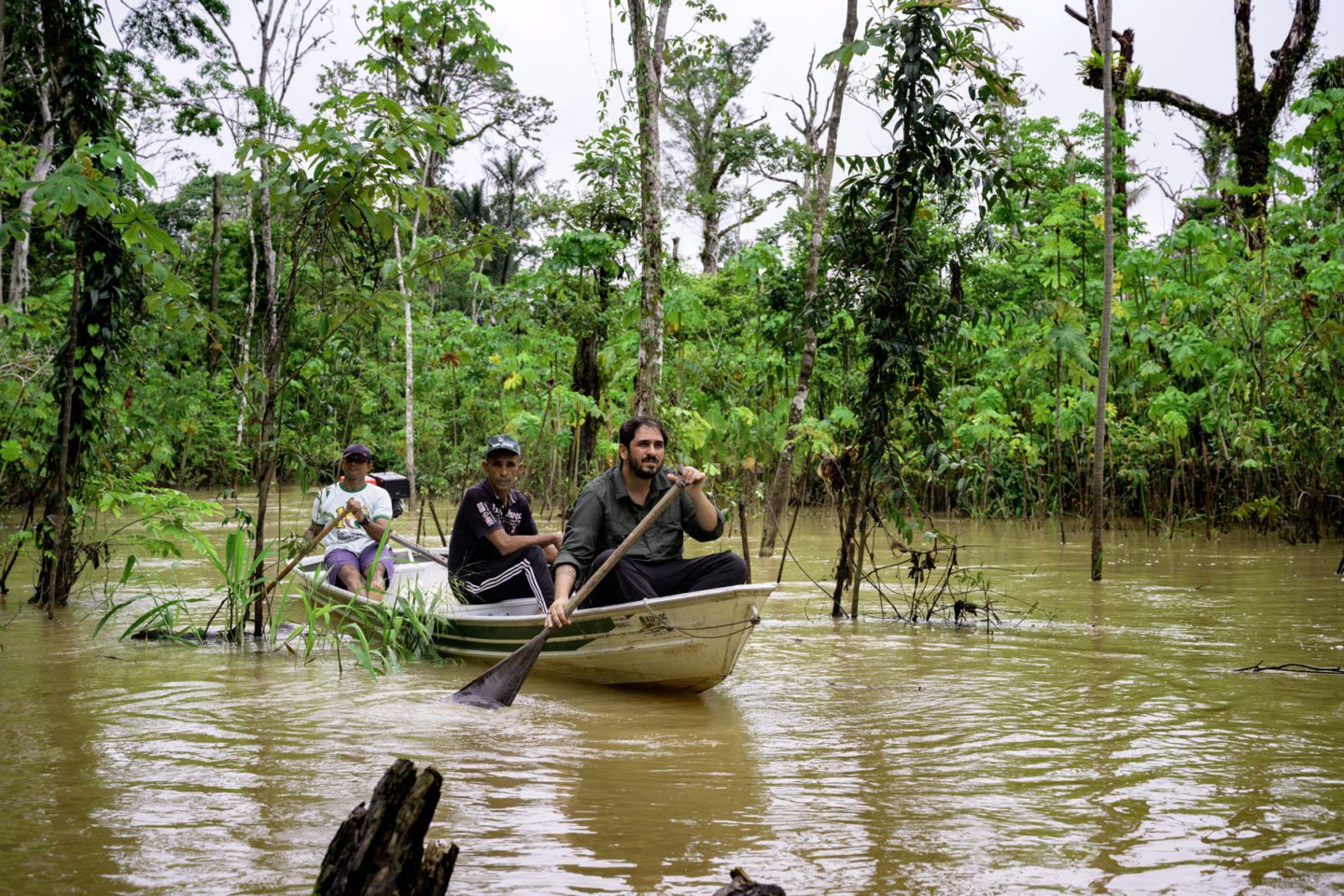
Deep on the Amazon’s Juruá River, João Campos-Silva and colleagues stop the engine and paddle as they approach rapids.

Near Carauarí in the Amazon, part of the vast region whose people and wildlife João Campos-Silva is aiming to protect.
Its scales are piranha-proof, and it has vicious sharp teeth not just round the edge of its mouth but on its palate, which means that its prey is essentially shredded.
It could also prove key to saving the Amazon’s eco-system. ‘It’s a fantastic fish,’ declares Brazilian ecologist João Campos-Silva. ‘It’s an iconic species for the Amazon and we are working with it to bring together human and environmental needs.’ Along the Jurua River, a tributary of the Amazon, the arapaima represents not just food but income. With so many communities dependent on the fish for survival, Campos-Silva has been working on a scheme in which the local people have been actively encouraged to get involved in protecting it.
Across the planet we are seeing megafauna going extinct. This is a reversal of the trend.
João Campos-Silva, Brazilian ecologist
‘Towards the end of the last century the arapaima populations were collapsing due to over-fishing,’ he continues. ‘In some localities it was almost extinct.’ A major problem was illegal fishing. Because the arapaima frequently comes to the surface to breathe air, it is an easy target for fishermen waiting in makeshift canoes with their harpoons.
So a scheme was set up in which ‘fishing accords’ were negotiated with local communities in which lakes where the arapaima lived were divided into three categories. There were open-access lakes, which were open to all fishing interests including commercial ones. There were also subsistence-use lakes, in which only artisanal fishermen from the community could catch the arapaima. And then there were protected lakes, where no one could fish, and locals stood guard.
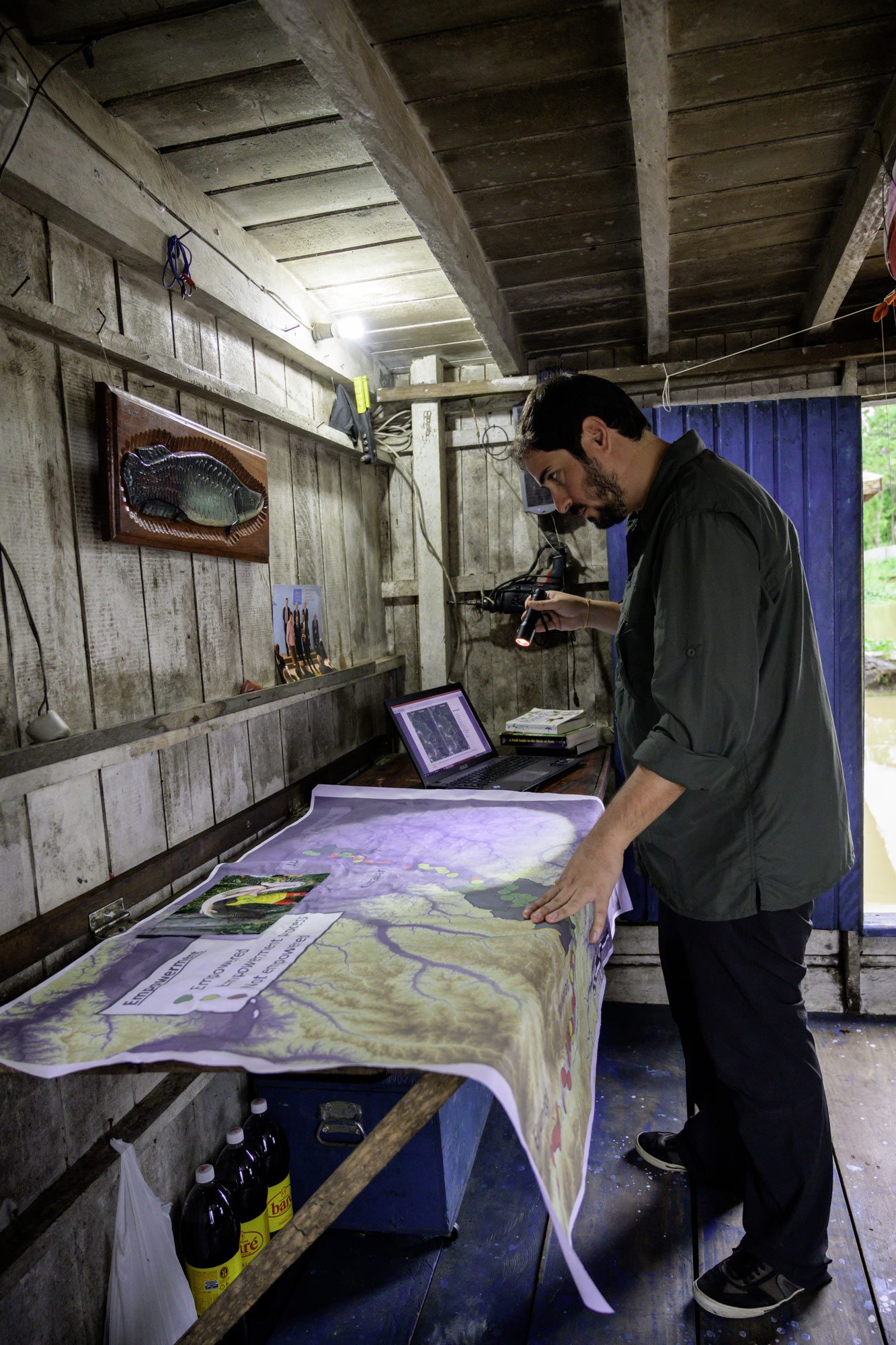
Campos-Silva surveys a map of Amazon’s Médio Juruá region. Numerous local communities support his sustainable development project.
The scheme has been hugely successful. Observations were taken at 80 floodplain lakes across a 14,000km squared landscape. Since the measures were implemented the arapaima population has increased by between five and eight-times in the subsistence lakes, and from five to sixteen-times in protected lakes.
‘Over the course of ten years we have changed the paradigm – now local people can see that conservation really is a route to a better life,’ says Campos-Silva.
The arapaima is an apex predator, which means that while it is vital to a healthy eco-system it also reduces the population levels of other kinds of fish. But Campos-Silva points out that by keeping lakes in three different categories, ‘high value species’ like the arapaima can thrive in protected lakes, while smaller species will continue to flourish in unprotected lakes. ‘It’s a win-win model,’ he laughs.
He continues, ‘Across the planet we are seeing megafauna going extinct.’ (In 2012 two breeds of giant tortoise disappeared, as well as two species of deer; a recent report declared that 150 further species of megafauna were being pushed towards extinction.) ‘In this case local communities have ensured the recovery of the largest freshwater fish on earth. It’s a reversal of the trend, which is very positive news for conservation as a whole.’
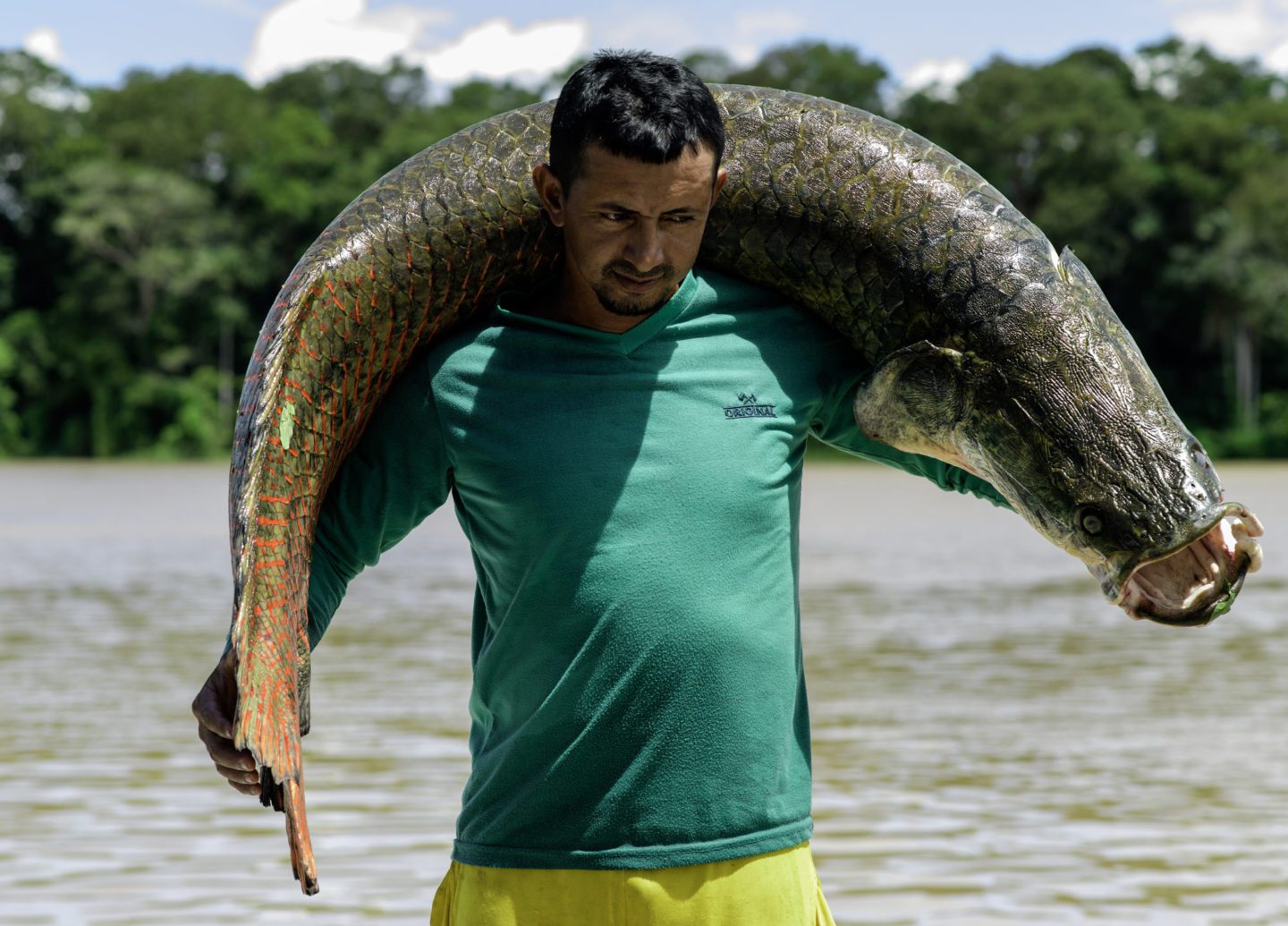
Holding an average-sized arapaima of about 60kg. The fish can weigh up to 200kg.
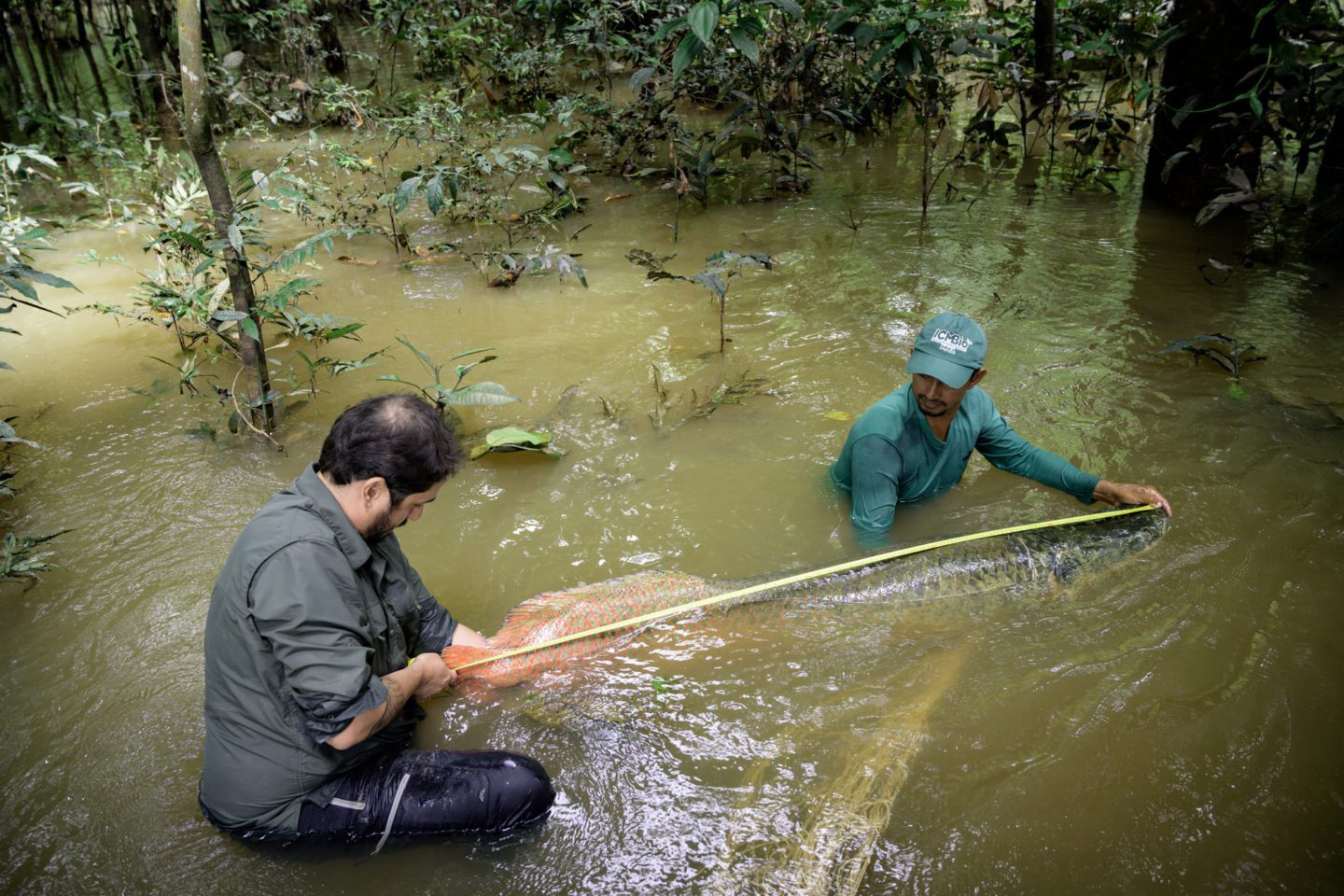
Measuring an arapaima.
As a result of the success, Campos-Silva has become a 2019 Rolex Awards for Enterprise winner, which champions people with original ideas who want to improve the world around them. The 200,000 Swiss francs awarded means that he will now be able to apply this conservation model on a much larger scale.
Now he wants to take the scheme to 60 new communities, with the aim of quadrupling arapaima populations over the next three years. By helping the arapaima, these communities will help themselves, ‘The extra income will build schools, health clinics, and create jobs – especially for women – from fisheries and fishery management. The arapaima has become the fish for changing the Amazon.’
